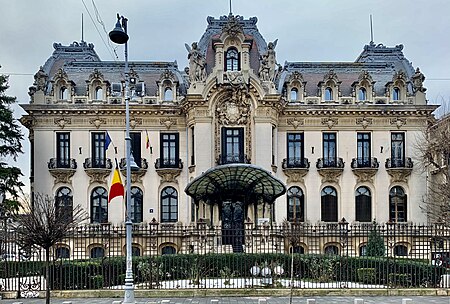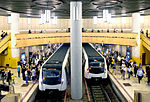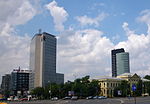Cantacuzino Palace
Calea VictorieiHistoric monuments in BucharestHouses completed in 1902Museums in BucharestPalaces in Bucharest

Cantacuzino Palace is located on Calea Victoriei no. 141, Bucharest, Romania. It was built by architect Ion D. Berindey in the Beaux Arts style, having a few Rococo Revival rooms. Today it houses the George Enescu museum.
Excerpt from the Wikipedia article Cantacuzino Palace (License: CC BY-SA 3.0, Authors, Images).Cantacuzino Palace
Calea Victoriei, Bucharest
Geographical coordinates (GPS) Address Nearby Places Show on map
Geographical coordinates (GPS)
| Latitude | Longitude |
|---|---|
| N 44.4487 ° | E 26.0883 ° |
Address
Palatul Cantacuzino
Calea Victoriei 141
010073 Bucharest (Sector 1)
Romania
Open on Google Maps









